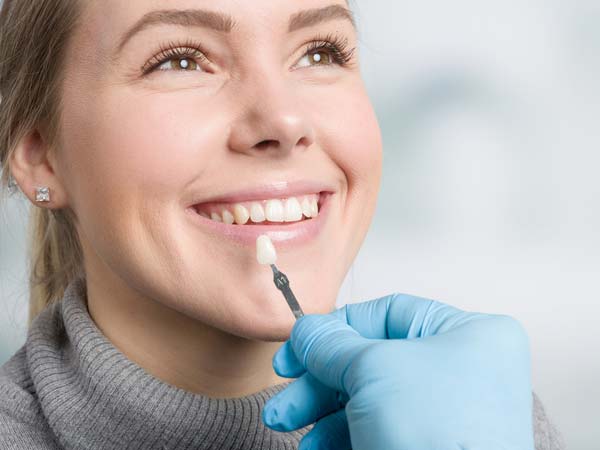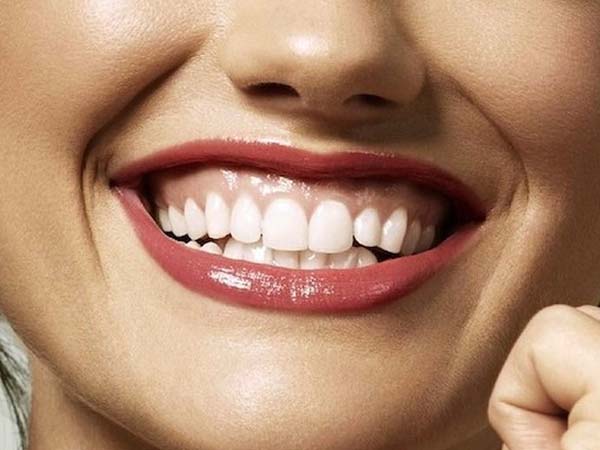
Dental Veneers: Transforming Smiles with Confidence
Dental veneers are a popular cosmetic dentistry solution that can transform your smile and give you the confidence to show off your teeth. Whether you have chipped, stained, misaligned, or unevenly spaced teeth, veneers offer a versatile and effective way to achieve a beautiful, natural-looking smile. Let’s explore what dental veneers are, how they work, and the benefits they provide.
What Are Dental Veneers?
Dental veneers are thin, custom-made shells made of tooth-colored materials, usually porcelain or composite resin. They are designed to cover the front surface of your teeth, effectively improving their appearance and enhancing your smile. Veneers are carefully crafted to match the color, shape, and size of your natural teeth, providing a seamless and harmonious result.
The Dental Veneer Procedure:
- Initial Consultation: The dental veneer process begins with an initial consultation with your dentist. During this visit, you can discuss your concerns, goals, and desired outcome. The dentist will evaluate your oral health and determine if veneers are the right option for you.
- Treatment Planning: Once it is decided that dental veneers are suitable for your case, your dentist will create a customized treatment plan. This plan takes into consideration factors such as the number of veneers needed and the desired outcome.
- Tooth Preparation: Before veneers can be placed, a small amount of enamel may need to be removed from the front surface of the teeth. This is done to create space for the veneers and ensure a proper fit. Local anesthesia may be used to ensure your comfort during this process.
- Impressions and Temporary Veneers: After tooth preparation, your dentist will take impressions of your teeth. These impressions serve as a mold for creating your custom veneers. While your permanent veneers are being fabricated in a dental laboratory, temporary veneers may be placed to protect your teeth.
- Veneer Bonding: Once your custom veneers are ready, your dentist will remove the temporary veneers and check the fit and appearance of the permanent ones. The veneers will be carefully bonded to the front surface of your teeth using a dental adhesive. The dentist will ensure proper alignment and make any necessary adjustments for a perfect fit.
- Final Touches: After the veneers are securely bonded, the dentist will make final adjustments to ensure proper bite alignment and aesthetics. The veneers will be polished, and your new smile will be revealed.
Benefits of Dental Veneers:
- Enhanced Aesthetics: Dental veneers can effectively address various cosmetic concerns, including discoloration, chips, cracks, misalignment, and gaps between teeth. They provide a natural-looking and attractive smile, boosting your self-confidence.
- Versatility: Veneers offer versatility in treating multiple dental issues simultaneously. Whether you have a single tooth that needs improvement or desire a complete smile makeover, veneers can provide comprehensive results.
- Stain Resistance: Porcelain veneers are highly resistant to stains, allowing you to enjoy a bright and vibrant smile for years to come. They maintain their natural appearance and color even when exposed to food and beverages that typically cause staining.
- Conservative Treatment: Compared to other dental procedures, veneers require minimal tooth structure removal. This means that the natural tooth is preserved to a greater extent, making veneers a conservative option for smile enhancement.
- Longevity: With proper care and maintenance, dental veneers can last for many years. Regular brushing, flossing, and routine dental visits are essential for maintaining the health and longevity of your veneers.
Consultation with a Cosmetic Dentist:
If you are considering dental veneers to improve your smile, it is important to schedule a consultation with an experienced cosmetic dentist. They will assess your oral health, discuss your expectations, and create a personalized treatment plan to help you achieve your dream smile.
Conclusion:
Dental veneers offer a transformative solution for achieving a beautiful smile. With their ability to correct a wide range of dental imperfections, veneers can give you the smile you’ve always desired. Consult with a skilled cosmetic dentist to explore the possibilities of dental veneers and take the first step towards a confident and radiant smile.
FAQs (Frequently Asked Questions)
- Are dental veneers permanent? Dental veneers are considered a permanent solution as they are bonded to the natural tooth structure. However, they may need to be replaced after several years due to normal wear and tear or if they become damaged.
- Can veneers be whitened if they become stained? Unlike natural teeth, veneers cannot be whitened with traditional teeth whitening methods. It is important to maintain good oral hygiene and avoid habits that can cause staining, such as smoking or consuming excessive amounts of staining foods and beverages.
- Do veneers require any special care? Veneers do not require any special care beyond maintaining good oral hygiene practices. It is important to brush and floss regularly, avoid biting into hard objects, and visit your dentist for routine check-ups and cleanings.
- Can veneers be replaced if they get damaged? In some cases, veneers can be repaired if they become chipped or damaged. However, if the damage is extensive, replacement may be necessary. It is best to consult with your dentist if you suspect any damage to your veneers.
- 5. Are veneers suitable for everyone? While veneers are a versatile and effective cosmetic solution, they may not be suitable for everyone. Your dentist will assess your oral health and discuss alternative treatment options if veneers are not the best choice for you.














